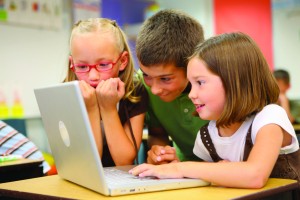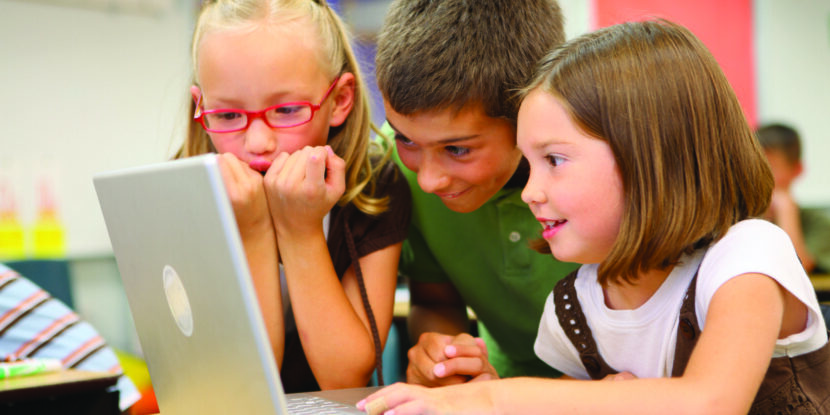
I read an article recently about an assistant professor at the University of Ontario Institute of Technology who wrote a research paper proposing that the immensely popular “Elf on the Shelf” is teaching kids that giving up privacy is “normal.” These voyeuristic little elves purportedly report back to the North Pole every night to fill in Santa on the behavior — or misbehavior as the case may be — of the elf’s assigned child. According to Assistant Professor Laura Pinto, this elf surveillance, something the big man in the red suit has been doing for centuries, will normalize NSA spying, which has also been going on for what seems like centuries.
Whilst Dr. Pinto has been analyzing the comings and goings of peeping elves, she has seemingly overlooked the very real privacy crisis being waged in our culture. More specifically, in our classrooms.
Children learn very quickly their lives are not private. Whether they completely comprehend what that means is another question. Based on what seems to be a cultural devolution, neither do their parents. From their first breath, children are powerless to maintain their own privacy. It has become customary in our culture to prolifically document our children’s every waking moment; every achievement, every embarrassment, every selfie in the drive thru lane at Starbucks, and then splash their images prominently across Facebook, Instagram, Twitter, and a whole host of other social media platforms. Our children can barely eat an after school snack without it becoming a photo-worthy Facebook moment.
The Elf on the Shelf is the least of our worries. If children aren’t learning to accept the normalcy of life on display from overly zealous parents with no privacy boundaries, they undoubtedly will when those same parents trot them off to school and children become students. Increasingly, a child’s very existence in the classroom becomes a data point; a discrete unit of information, a statistic, a numerical or graphical element. And not only do the gatherers of this information want to know what children learn; more forebodingly, they want to know how children behave, think, and feel.
In the good old days, teachers kept track of attendance, grades, and disciplinary actions via paper and pencil. A student’s educational record was stored discretely in the school office under the watchful eye of the school secretary. If anyone wanted information from the file, they had to go through her first. The information contained in the file never, or rarely, left the building.
That is not the case today. Not only has the type of information collected changed drastically, the list of people and/or entities with access to a student’s private information has mushroomed. With the implementation of State Longitudinal Data Systems, student information is now collected and stored with each state’s Department of Education. The state, pursuant to the Family Education Rights and Privacy Act (FERPA) can, and does, share that information, including personal information unrelated to academics, with third parties and without parental consent. There really is no limit.
But it’s not just school officials and administrators collecting information. For example, if a child attends a school stocked to the gills with Chromebooks (and which school isn’t), Google is tracking them, too. In fact, the Electronic Frontier Foundation recently filed a complaint with the FTC alleging that Google Chromebook default settings enabled the company to collect information about students’ Internet search requests and online video habits for use in targeted advertising.
Something as innocuous as the school cafeteria line is now under the watchful eye of educational tech companies like MySchoolBucks, which tracks student food purchases via a pre-paid debit card students use to pay for school lunches. But the way schools track food purchases doesn’t stop there. Many schools across the United States have implemented biometric technology with which to track purchases and link them to individual students. Palm scanners are devices that use a high-resolution infrared photograph of the vein pattern just below the skin. Vein patterns are unique markers, much like a fingerprint, and track who is making the purchase and what is being purchased.
Under the guise of “security,” some schools, from elementary grades to college, are moving toward iris scanning as a form of identifying and tracking students. The scanners monitor students’ movements in and out of the school building, pick up and drop off at bus stops, and can be used to access a student’s computer or tablet in the classroom. According to the tech companies, they don’t store the information. But schools do store the information as part of the student’s educational record — an educational record to which third parties have almost unfettered access without parental consent.
It’s a brave new world. Nefarious elves aren’t sneaking around watching children’s every move, but a lot of other people are. For what purpose, one can only imagine. It’s probably safe to say, however, it’s for a lot of reasons other than whether or not there will be a lump of coal in a stocking next Christmas.
Lisa Hudson is a wife, mom, education policy researcher, licensed Michigan attorney, and a member of Opt Out Arizona and Arizonans Against Common Core.


